EV Electric vehicles are transforming the automotive landscape by offering sustainable, efficient, and emission-free transportation options.
Renault 5 E-Tech
A compact electric car that has generated significant anticipation since its concept debut in 2021 is the new Renault 5. It embodies what I believe the Honda E should have been. Both cars have captured my attention with their impressive designs, eliciting excitement upon first glance. Luckily, they remained faithful to the original concept without significant alterations.
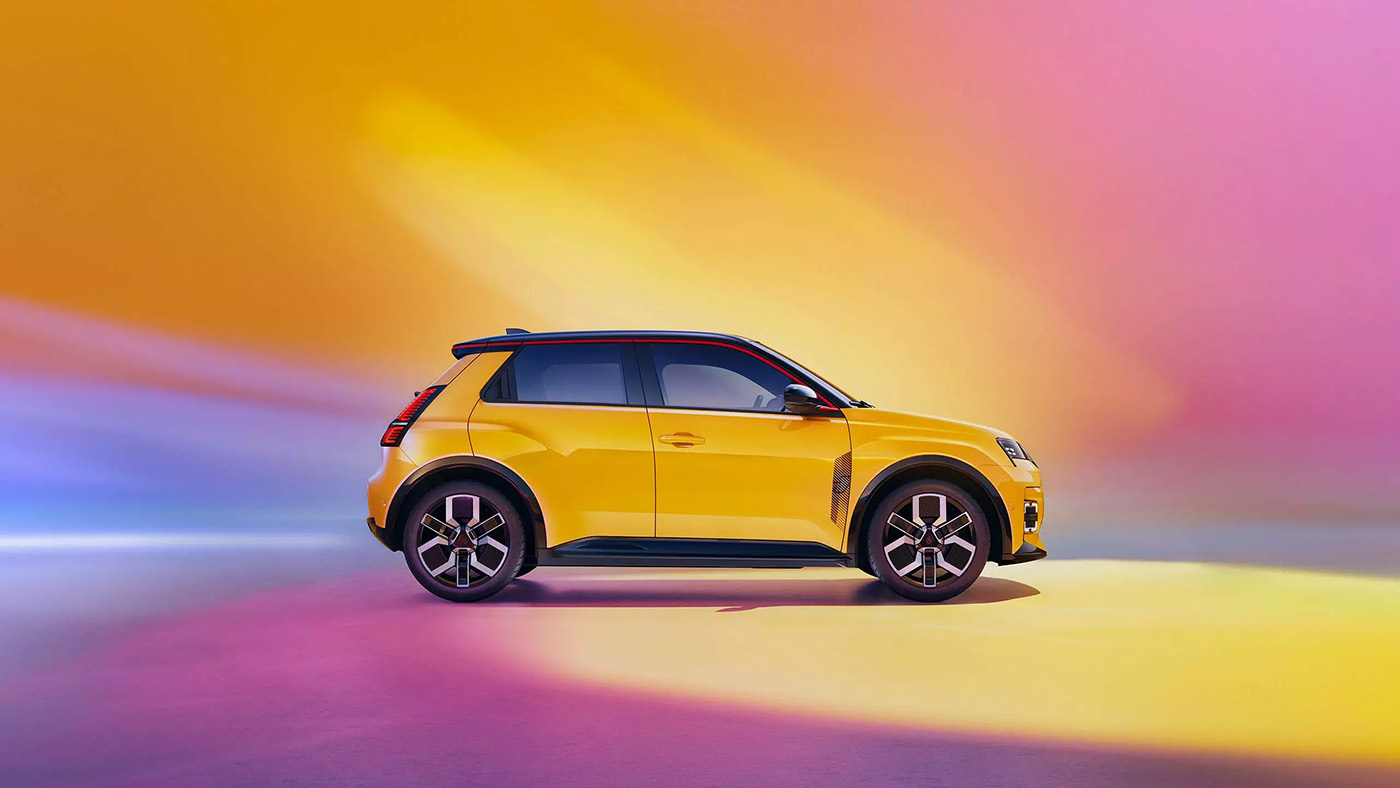
Yellow Pop
Creative!
The body shape not only mirrors that of its predecessors but also integrates several design features that refer to its past. For instance, the daytime running lights draw inspiration from the fog lights of the Renault 5 Turbo, while a charging indicator is situated on the hood, a nod to the location where cold air was once drawn in by a fuel engine in the classic car—a necessity rendered obsolete in modern times.
There are 5 colors to choose from:
- Yellow Pop
- Green Pop
- Starry Black
- Pearl White
- Night Blue
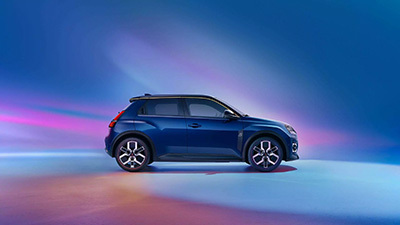
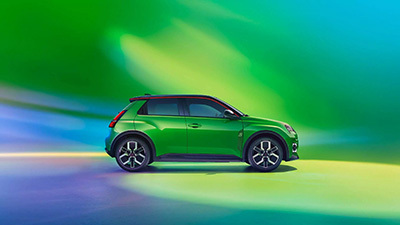
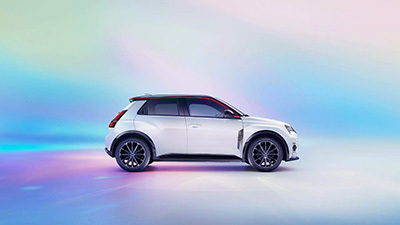
Aside from the above you also can choose from a range of options such as two-tone paint, roofline color variations, front roof, and side decorative strips, along with two wheel designs, to tailor the Renault 5 to your preferences. With 200 potential combinations available, you can create a customized look that reflects your individual taste.
Small is Beautiful
The Renault 5 may be compact on the outside, but it still accommodates up to five passengers. With the assistance of parking aids, manoeuvring and parking become effortless tasks. It's the perfect city car for everyday use. The length of the car is 3.92m and it has a boot capacity of 326L. Just what we need, an affordable alternative to the continuously growing large SUVs. Also equally important is its weight, just 1.450kg (3,196 lbs) making it as light as some comparable internal combustion engine cars. Reduced weight signifies a lower energy requirement to get moving, which is advantageous for overall consumption rates.
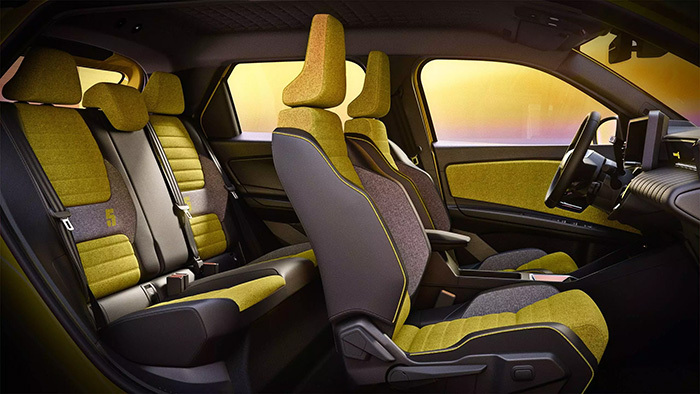
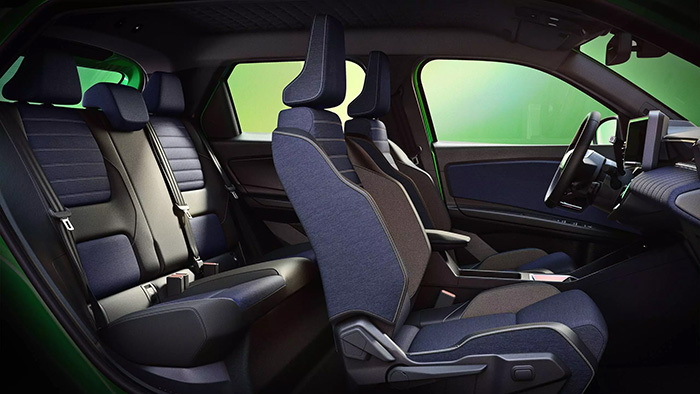
The seat design draws inspiration from the flame-spewing R5 Turbo, while the fabric used for covering them is crafted entirely from recycled materials. Additionally, certain trims feature dashboards and door panels constructed from recycled plastic. The roofline looks like felt and probably will do wonders for its acoustics. In my honest opinion, a quiet interior is a crucial aspect of an EV that I genuinely appreciate—it can make or break the overall experience.
Technical Details
Upon its autumn market debut, the model will initially be exclusively equipped with the larger 52 kWh battery (net) and the most robust engine, boasting 110 kW. All electric R5s will have an 11 kW AC onboard charger as standard. DC charging up to 100 kW is supported. The fast charging window spans approximately 30 minutes, enabling a charge level increase from 15% to 80% (SoC). Later there also be a variant with a 40 kWh battery, both batteries contain prismatic NMC (Nickel-Manganese-Cobalt) cells from Renault’s battery partner AESC. This all new Renault 5 sits on the so-called AmpR Small platform, intended for B-segment EVs and it will also be the foundation for the upcoming Renault 4.
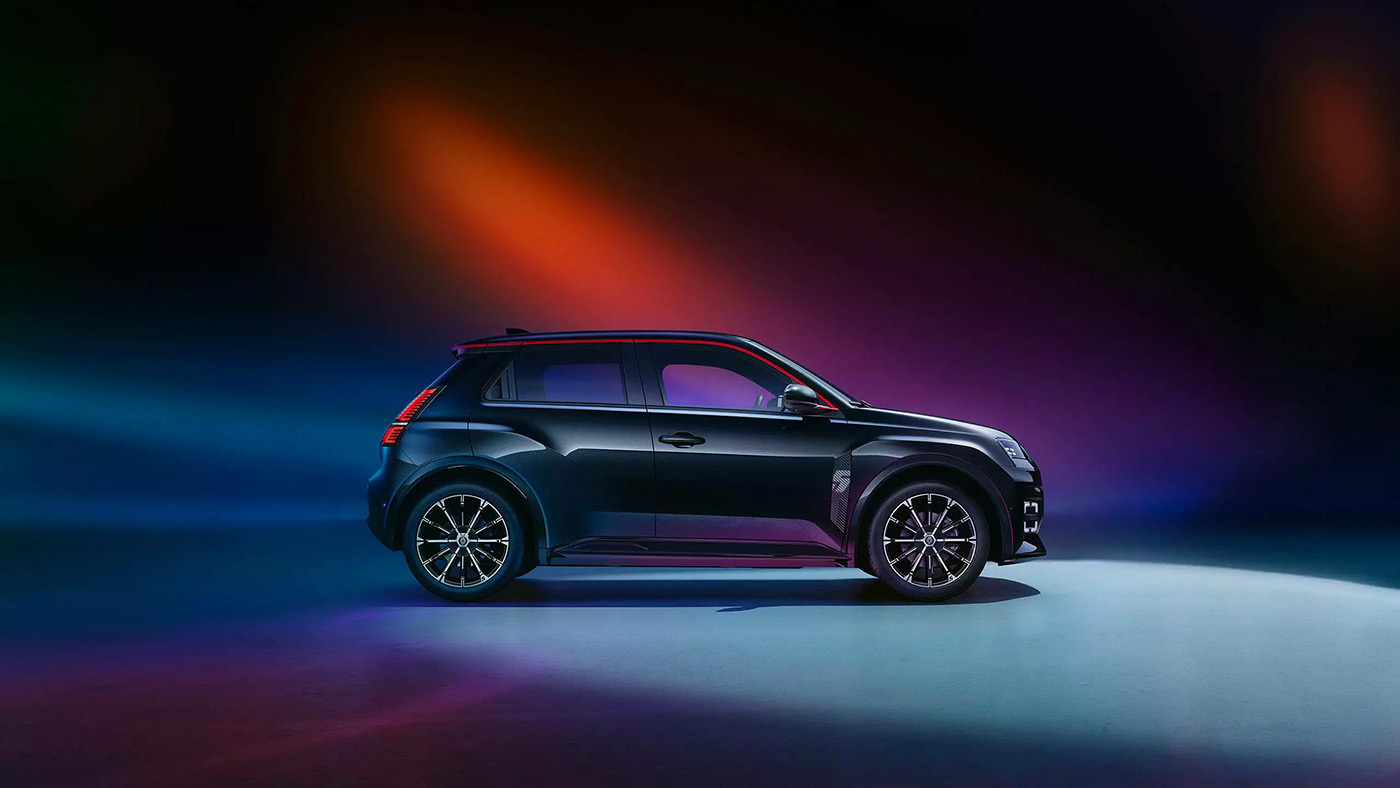
Starry Black
Inside you’ll also find two 10” screens, one that features the driving cluster and the other one takes on the role of a digital instrument cluster. The operating system is called openR link and has Google built-in: voice assistant, real-time navigation and more than 30 apps. They also launched an avatar called ‘Reno’ which supposedly interacts with the driver and passengers, both inside and outside the car. Because it integrates with the artificial intelligence chatbot ChatGPT, it can reply to questions using basically the whole internet as its source of information.
V2L and V2G
What excites me the most is that this price range (25.000 to 30.000 Euro) car will also come standard with a new AC bidirectional charger compatible with V2L (vehicle-to-load) and V2G (vehicle-to-grid) technologies. I'm pretty convinced that this pioneering system is set to become widely used. Most cars are sitting idle 90% of the time, making them quite useless. Now this technology will finally give the vehicle an actual purpose. Now it can become a real player in the energy ecosystem through the services of Mobilize, feeding electricity back into the grid when the price is right. As a result, users will enjoy significant savings on their electricity bills. The maximum power output is 3.7 kW.
Thanks to Mobilize V2G, cars become an energy reserve.
Unfortunately, there is a drawback: this feature won't be available in all of Europe at launch. Initially, Renault 5 owners will only have access to this feature in France and Germany this year, with availability in the United Kingdom scheduled for 2025. I have no idea about Belgium or the rest of Europe.
Made in Europe
The Renault 5 will be built in a factory in Douai (France), with the help of European suppliers less than 300 km away. This car isn't afraid to hide its origin, especially when you'll see the optional baguette holder (made by French basket-maker Marguerite Herlant).

